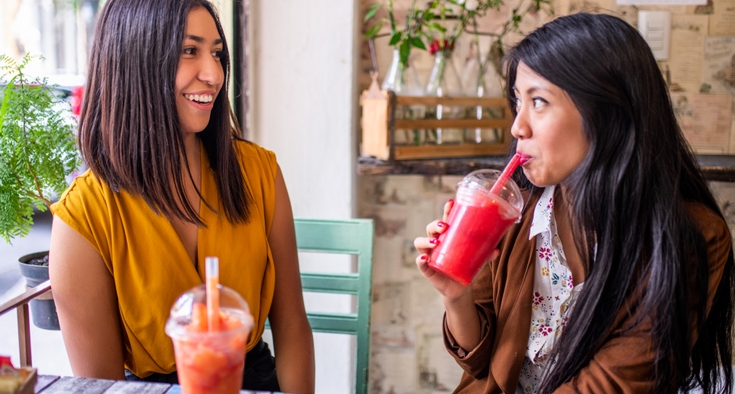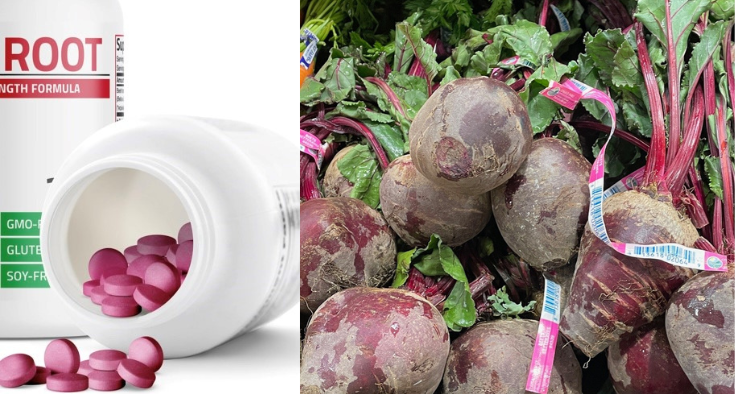TLDR*: The Food and Drug Administration says Red 3 – an artificial food dye – must be removed from foods by 2027 and medications by 2028 because research has linked it to cancer in rats. For now: Don’t panic, but try to move away from foods with Red 3 because they aren’t part of a balanced or nutritious diet anyway.
As a mom, I try to keep artificial food dyes out of my kids’ diet — but between birthday parties, school celebrations, and the price of organic snacks, I feel like I’m fighting an uphill battle.

Things are about to get easier, though: Now I have the Food & Drug Administration (FDA) backing me up (at least, sort of).
Pediatrician Dr. Jyothi Nair of Novant Health Pediatrics - Berewick in Charlotte is here to explain the FDA’s recent announcement about Red 3 and tell us what it means for our lunch-packing.
Concerned about your child's health? A pediatrician can help.
Exactly which food dye did the FDA ban, and why?
The FDA banned Red 3 from being used in foods and medicine, because research on rats shows a link between high levels of this color additive and cancer.
No existing research shows that Red 3 causes cancer in human beings. So, for those of us who have knowingly and unknowingly given our children plenty of these products, don’t be alarmed — we don’t have that same hormonal mechanism that’s in the rats.
But the FDA can’t authorize an additive if research on animals or humans shows a connection between that additive and cancer.
The Red 3 ban will be effective in 2027 for food, and in 2028 for medicine, which gives manufacturers a deadline to reformulate their products. That means that products with Red 3 are still on the shelf for now.
What is Red 3 dye, anyway?
It’s a synthetic food dye made from petroleum that makes food and medication appear red. It doesn’t add a taste to food, although it can give your brain some information about a food’s expected taste. It goes by a few names, including Red 3, FD&C Red 3 and FD&C Red No. 3.
What are some foods that include Red 3 dye?
Over 3,000 foods use it, including the Nesquik brand of strawberry-flavored milk, conversation hearts, certain flavors of Ring Pops, imitation bacon bits, maraschino cherries, and some brands of sprinkles, cake mixes, and cake icing … just to start. It’s also in some oral medications, like some brands of acetaminophen and omeprazole, and in the ADHD medication Vyvanse.
Is Red 3 dye different than Red 40?
Red 40 is a different synthetic, petroleum-based food additive that dyes food red.
You might have heard about red dye 40 because there’s been a lot of discussion about a possible link between this additive and neurobehavioral changes in some children, like hyperactivity and changes in attention span.
How many food dyes are out there?
In total, there are nine certified color additives approved by the FDA. Interestingly enough, California has already banned the addition of six particular additives to their meals in public schools: Red 40, Yellow 5, Yellow 6, Blue 1, Blue 2, and Green 3. I feel like that’s a harbinger of events to come.
The FDA says “the totality of scientific evidence indicates that most children have no adverse effects when consuming foods containing color additives, but some evidence suggests that certain children may be sensitive to them.”
There are natural ingredients that can add color: tumeric, beet juice, saffron, annatto. Hopefully manufacturers will move toward using those.
So should we avoid Red 3 dye — or any other dyes?
If you’re concerned about the potential health impacts of Red 3, try to read labels carefully, but just know that there’s been no correlation between Red 3 and cancer in humans.
As a pediatrician, though, I want to point out that we do not need to eat food coloring or synthetic dyes at all, because they’re not part of a balanced or nutritious diet. We should be moving toward fruits, vegetables, healthy snacks and unprocessed foods anyway.
Editor’s note: For those not familiar with the acronym: TLDR stands for "too long, didn’t read," and offers a quick summary for those who just want to get to the bottom line in a sentence or two. The Boomer who edited this story was not familiar with its usage until a year or two ago but has been assured by many that everyone else knows it means.
Send your thoughts on this format to roland.wilkerson@novanthealth.org.












